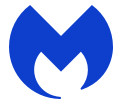What is CapitalSearchEngine
CapitalSearchEngine is an adware application that targets Mac computers. Adware is type of malicious software that can cause problems for your machine. CapitalSearchEngine can generate numerous additional pop up, banner, pop-under and in-text link ads flooding on your web-browser; collect your privacy data such as login details, online searches, etc; run in the background and drag down your Apple Mac running speed; give more chances for other adware software, potentially unwanted applications even malicious software to get on your MAC.
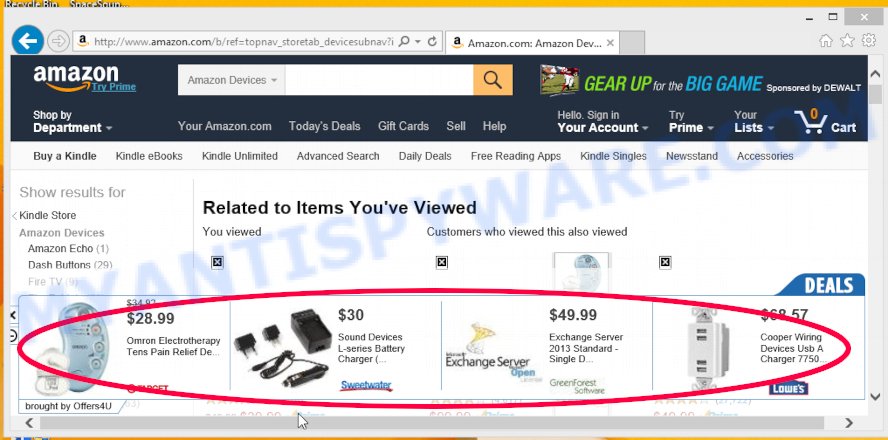
Unwanted ads
Another reason why you need to remove the adware is its online data-tracking activity. CapitalSearchEngine can install a component which enables its creator to track which webpages you visit, which products you look at upon those pages. They are then able to choose the type of advertisements they show you. So, if you had the adware on your Apple Mac, there is a good chance you have another that is gathering and sharing your data with third parties, without your say-so.
To find out how to delete the CapitalSearchEngine adware, we recommend to read the few simple steps added to this article below. The guide was prepared by experienced security researchers who discovered a way to get rid of the adware software out of Mac computers.
How does CapitalSearchEngine get on your computer
Adware usually spreads bundled with free programs that downloaded from the Internet. Which means that you need to be proactive and carefully read the Terms of use and the License agreement properly. For the most part, adware and potentially unwanted apps will be clearly described, so take the time to carefully read all the information about the software that you downloaded and want to install on your MAC.
Threat Summary
| Name | CapitalSearchEngine, CapitalSearchEngine 1.0 app |
| Type | adware, PUP (potentially unwanted program), Mac malware, Mac virus |
| Detection Names | MacOS.Agent-MT, ApplicUnwnt, Trojan-Downloader.OSX.Adload, Osx.Adware.Cimpli, Adware.MAC.Generic, OSX.Trojan.Gen, Program:MacOS/Vigram.A and Adware/Adload!OSX |
| Distribution | Free software installers, misleading pop-up advertisements, fake update tools and torrent downloads |
| Symptoms | The web-page links redirect to a websites different from what you expected, ads appear in places they shouldn’t be, there is an unwanted program in the ‘Applications’ section of the Finder, new toolbars on your desktop, your internet browser homepage has changed and you cannot change it back, speed test good but internet slow. |
| Removal | CapitalSearchEngine removal guide |
How to Remove CapitalSearchEngine adware (removal steps)
As with removing adware, malicious software or potentially unwanted apps, there are few steps you may do. We advise trying them all. If you do only one part of the tutorial, then it should be run malicious software removal utility, because it should get rid of adware software and block any further infection. But to completely remove CapitalSearchEngine you will have to at least reset your web-browser settings (startpage, search provider by default and newtab) to default state, delete all unwanted and suspicious apps, and remove adware by malicious software removal utilities. Some of the steps will require you to restart your computer or close this web-site. So, read this guidance carefully, then bookmark this page or open it on your smartphone for later reference.
To remove CapitalSearchEngine, perform the steps below:
- Remove unwanted profiles on Mac device
- Uninstall CapitalSearchEngine related programs through the Finder
- Remove CapitalSearchEngine related files and folders
- Scan your Mac with MalwareBytes
- Remove CapitalSearchEngine from Safari, Chrome, Firefox
- How to stay safe online
Remove unwanted profiles on Mac device
CapitalSearchEngine can make changes to the Mac system such as malicious changes to browser settings, and the addition of malicious system profiles. You need to check the system preferences, find and remove malicious profiles and ensure your settings are as you expect.
Click the System Preferences icon ( ![]() ) in the Dock, or choose Apple menu (
) in the Dock, or choose Apple menu ( ![]() ) > System Preferences.
) > System Preferences.
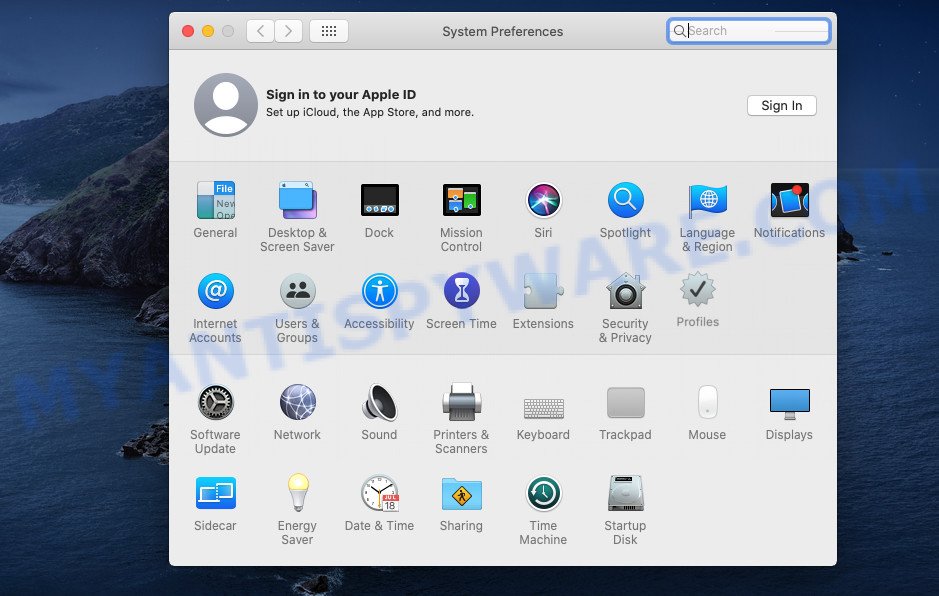
In System Preferences, click Profiles, then select a profile related to CapitalSearchEngine.
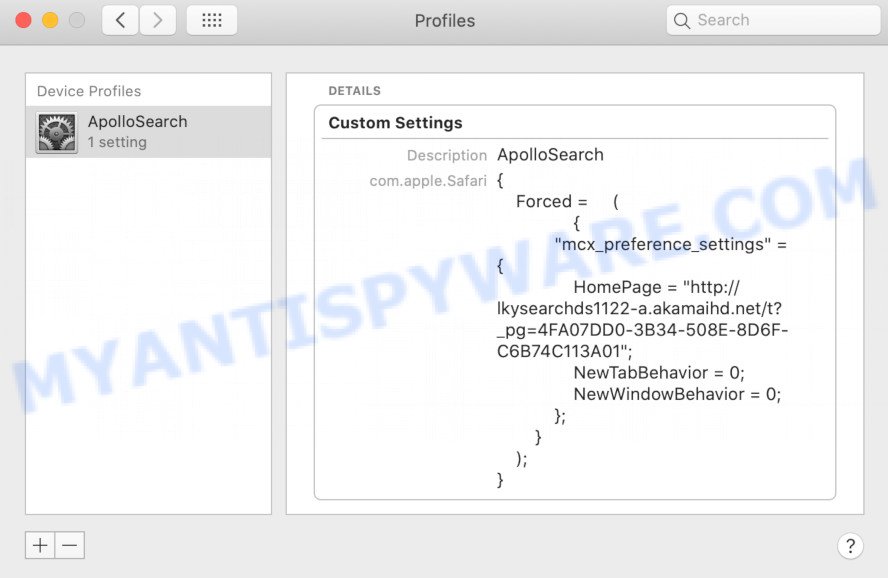
Click the minus button ( – ) located at the bottom-left of the Profiles screen to remove the profile.
Note: if you do not see Profiles in the System Preferences, that means there are no profiles installed on your Mac, which is normal.
Uninstall CapitalSearchEngine related programs through the Finder
In order to remove browser hijackers, potentially unwanted programs and adware software, open the Finder and click on “Applications”. Check the list of installed apps. For the ones you do not know, run an Internet search to see if they are browser hijackers, PUPs and adware. If yes, delete them off. Even if they are just a applications that you do not use, then deleting them off will increase your MAC OS start up time and speed dramatically.
Open Finder and click “Applications” as displayed below.
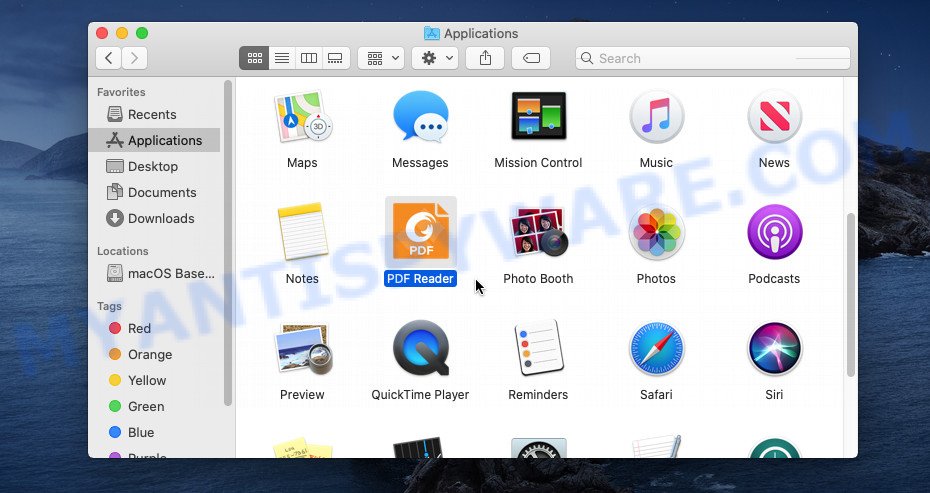
You will see a list of programs installed on your machine. We recommend to pay maximum attention to the program you installed last. Most probably, it is the CapitalSearchEngine adware. If you’re in doubt, you can always check the application by doing a search for her name in Google, Yahoo or Bing.
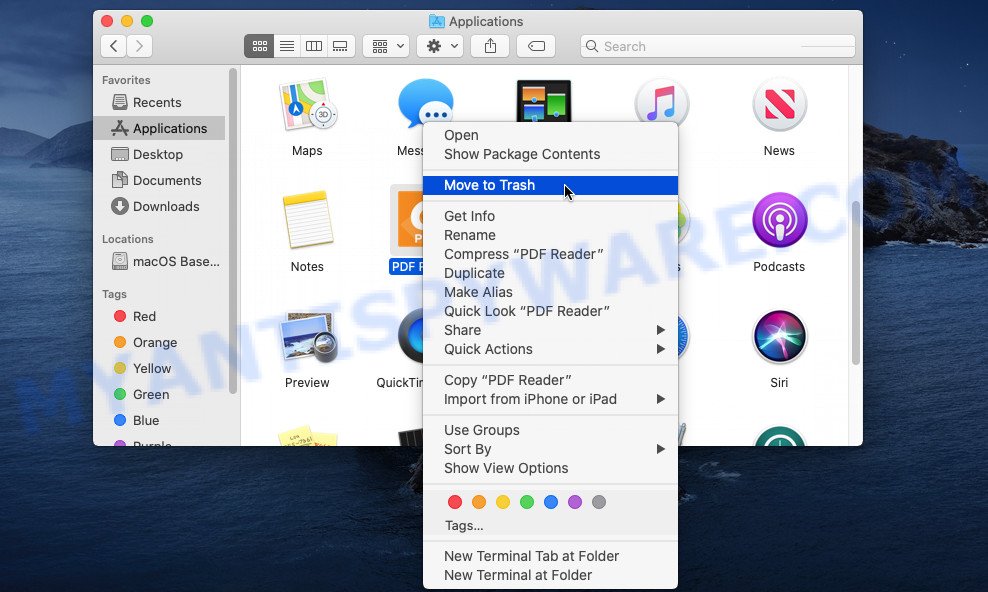
After the application which you need to delete is found, simply right press on its name, and choose “Move to Trash”.
Don’t forget, choose Finder, then “Empty Trash”.
Remove CapitalSearchEngine related files and folders
Now you need to try to find CapitalSearchEngine related files and folders, and then delete them manually. You need to look for these files in certain directories. To quickly open them, we recommend using the “Go to Folder…” command.
CapitalSearchEngine creates several files, these files must be found and removed. Below is a list of files associated with this unwanted application.
- /Library/LaunchDaemons/com.CapitalSearchEngine.system.plist
- ~/Library/LaunchAgents/com.CapitalSearchEngine.service.plist
- /Library/Application Support/.(RANDOM)/System/com.CapitalSearchEngine.system
- ~/Library/Application Support/.(RANDOM)/Services/com.CapitalSearchEngine.service.app
Some files created by CapitalSearchEngine are hidden from the user. To find and delete them, you need to enable “show hidden files”. To do this, use the shortcut CMD + SHIFT + . Press once to show hidden files and again to hide them. There is another way. Click Finder -> Applications -> Utilities -> Terminal. In Terminal, paste the following text: defaults write com.apple.finder AppleShowAllFiles YES

Press Enter. Hold the ‘Option/alt’ key, then right click on the Finder icon in the dock and click Relaunch.
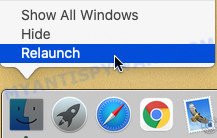
Click on the Finder icon. From the menu bar, select Go and click “Go to Folder…”. As a result, a small window opens that allows you to quickly open a specific directory.

Check for CapitalSearchEngine generated files in the /Library/LaunchAgents folder

In the “Go to Folder…” window, type the following text and press Go:
/Library/LaunchAgents
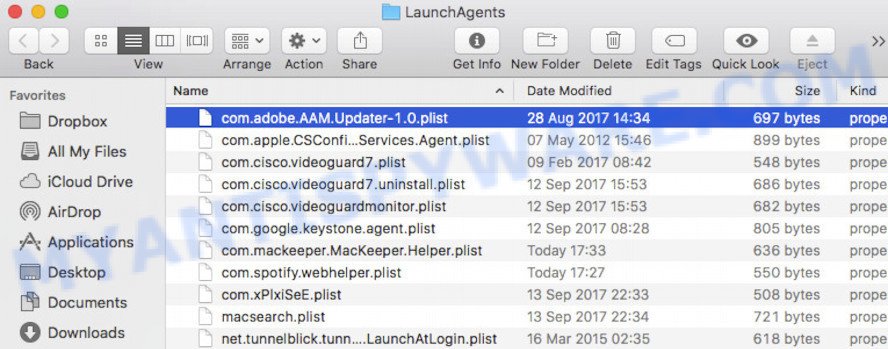
This will open the contents of the “/Library/LaunchAgents” folder. Look carefully at it and pay special attention to recently created files, as well as files that have a suspicious name. Move all suspicious files to the Trash. A few examples of files: com.CapitalSearchEngine.service.plist, com.net-preferences.plist, search.plist, macsearch.plist, installapp.plist, com.google.defaultsearch.plist, and com.machelper.plist. Most often, PUPs, browser hijackers and adware software create several files with similar names.
Check for CapitalSearchEngine generated files in the /Library/Application Support folder

In the “Go to Folder…” window, type the following text and press Go:
/Library/Application Support
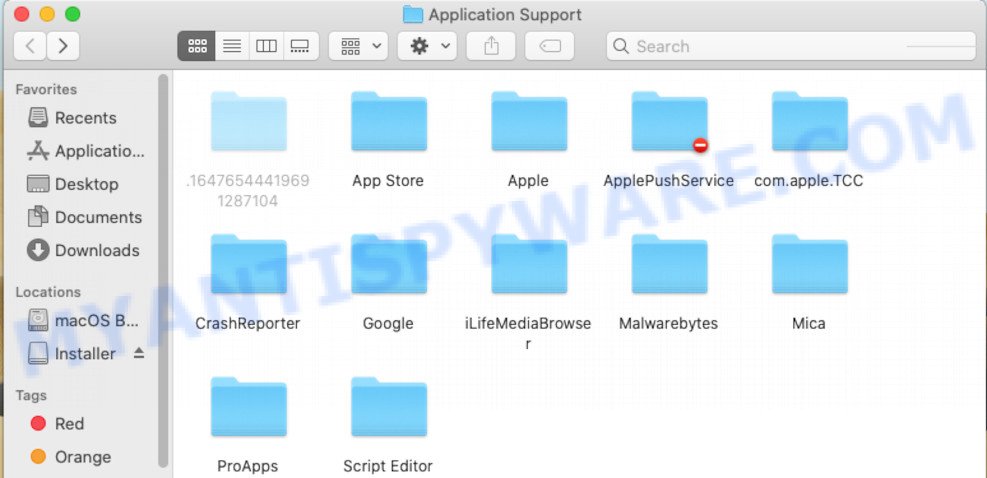
This will open the contents of the “Application Support” folder. Look carefully at its contents, pay special attention to recently added/changed folders and files. Check the contents of suspicious folders, if there is a file with a name similar to com.CapitalSearchEngine.system, then this folder must be deleted. Move all suspicious folders and files to the Trash.
Check for CapitalSearchEngine generated files in the “~/Library/LaunchAgents” folder

In the “Go to Folder…” window, type the following text and press Go:
~/Library/LaunchAgents

Proceed in the same way as with the “/Library/LaunchAgents” and “/Library/Application Support” folders. Look for suspicious and recently added files. Move all suspicious files to the Trash.
Check for CapitalSearchEngine generated files in the /Library/LaunchDaemons folder
In the “Go to Folder…” window, type the following text and press Go:
/Library/LaunchDaemons

Carefully browse the entire list of files and pay special attention to recently created files, as well as files that have a suspicious name. Move all suspicious files to the Trash. A few examples of files to be deleted: com.search.system.plist, com.machelper.system.plist, com.macsearch.system.plist, com.installapp.system.plist and com.CapitalSearchEngine.system.plist. In most cases, adware, potentially unwanted programs and browser hijackers create several files with similar names.
Scan your Mac with MalwareBytes
If you carefully followed the previous steps, then you should be able to get rid of CapitalSearchEngine. Of course, very often PUPs, adware software and browser hijackers hides on a Mac device, disguising itself as legitimate apps and files. Therefore, in some cases, it is difficult for an inexperienced user to decide whether a particular file is part of adware, browser hijackers and potentially unwanted programs. Therefore, we suggest you to run MalwareBytes to scan the Mac computer.
Click the link below to download the latest version of MalwareBytes Anti-Malware for Mac.
21024 downloads
Author: Malwarebytes
Category: Security tools
Update: September 10, 2020
When the download is done, close all windows on your computer. Further, start the saved file. Follow the prompts.
The MalwareBytes Anti Malware (MBAM) will automatically launch and you can see its main window as on the image below.
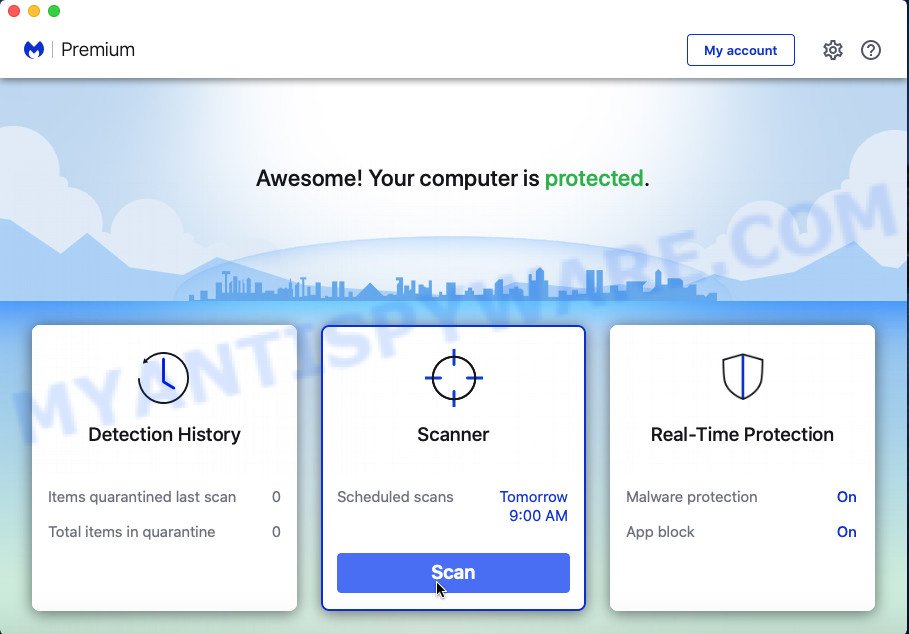
Next, click the “Scan Now” button to find CapitalSearchEngine . This task may take quite a while, so please be patient.
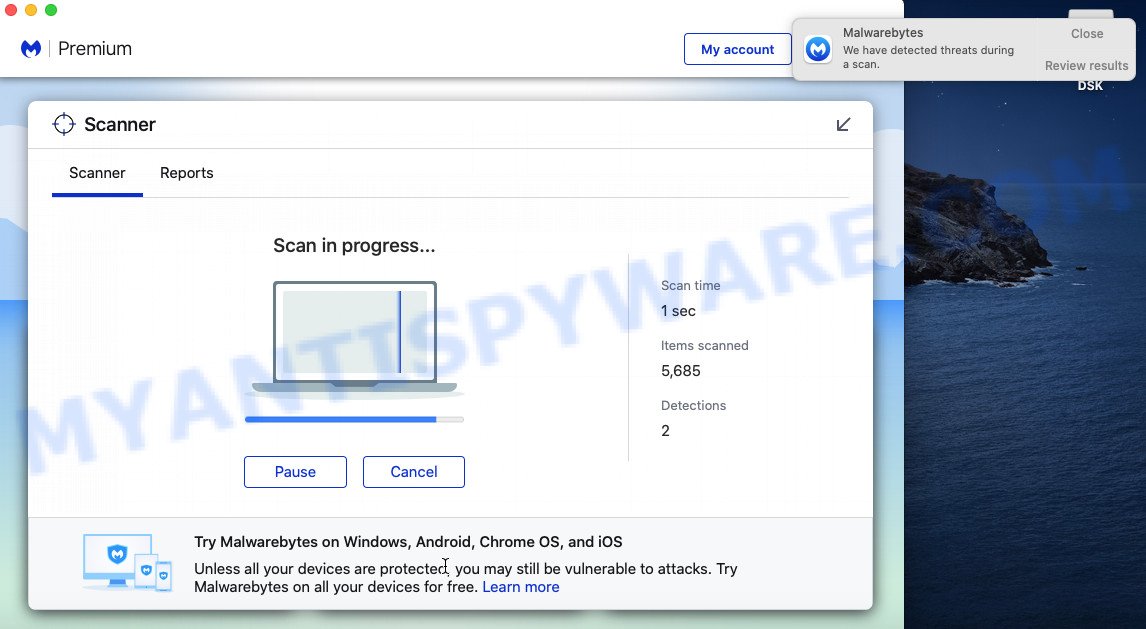
When that process is done, you can check all items found on your MAC. Review the results once the utility has complete the system scan. If you think an entry should not be quarantined, then uncheck it. Otherwise, simply press the “Quarantine” button.
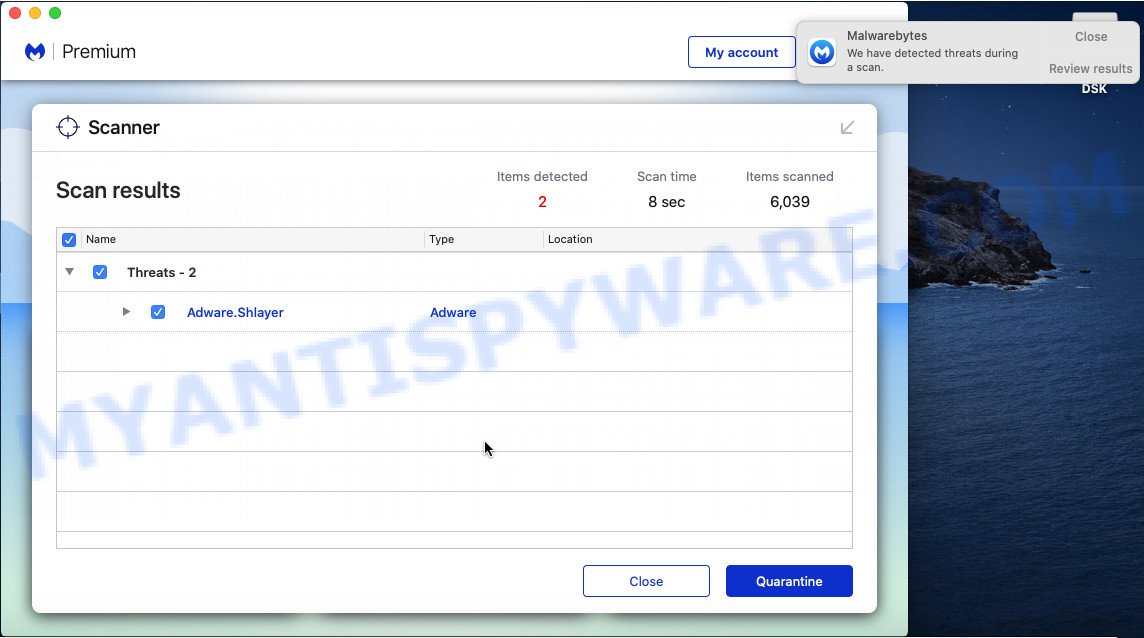
The MalwareBytes Anti Malware will start to get rid of CapitalSearchEngine adware.
Remove CapitalSearchEngine from Safari, Chrome, Firefox
Annoying CapitalSearchEngine adware or other symptoms of adware software in your web-browser is a good reason to find and remove harmful extensions. This is an easy method to recover web-browsers settings and not lose any important information.
You can also try to remove CapitalSearchEngine adware by reset Google Chrome settings. |
If you are still experiencing issues with CapitalSearchEngine adware removal, you need to reset Firefox browser. |
|
How to stay safe online
Run an adblocker utility such as AdGuard will protect you from malicious advertisements and content. Moreover, you may find that the AdGuard have an option to protect your privacy and stop phishing and spam webpages. Additionally, ad-blocking programs will help you to avoid annoying popup advertisements and unverified links that also a good way to stay safe online.
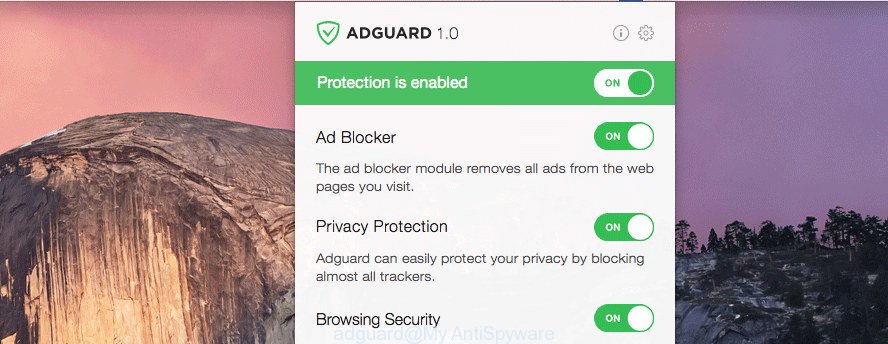
- Download AdGuard on your machine from the following link.
AdGuard for Mac download
3782 downloads
Author: © Adguard
Category: Security tools
Update: January 17, 2018
- After the downloading process is finished, launch the downloaded file. You will see the “Setup Wizard” program window. Follow the prompts.
- When the setup is finished, click “Skip” to close the setup application and use the default settings, or click “Get Started” to see an quick tutorial which will help you get to know AdGuard better.
- In most cases, the default settings are enough and you do not need to change anything. Each time, when you run your MAC, AdGuard will launch automatically and stop unwanted ads, block harmful and misleading web-sites.
Finish words
Once you have finished the steps shown above, your MAC system should be free from the CapitalSearchEngine adware and other malware. The Firefox, Chrome and Safari will no longer display any unwanted ads. Unfortunately, if the step-by-step guide does not help you, then you have caught a new adware software, and then the best way – ask for help here.
